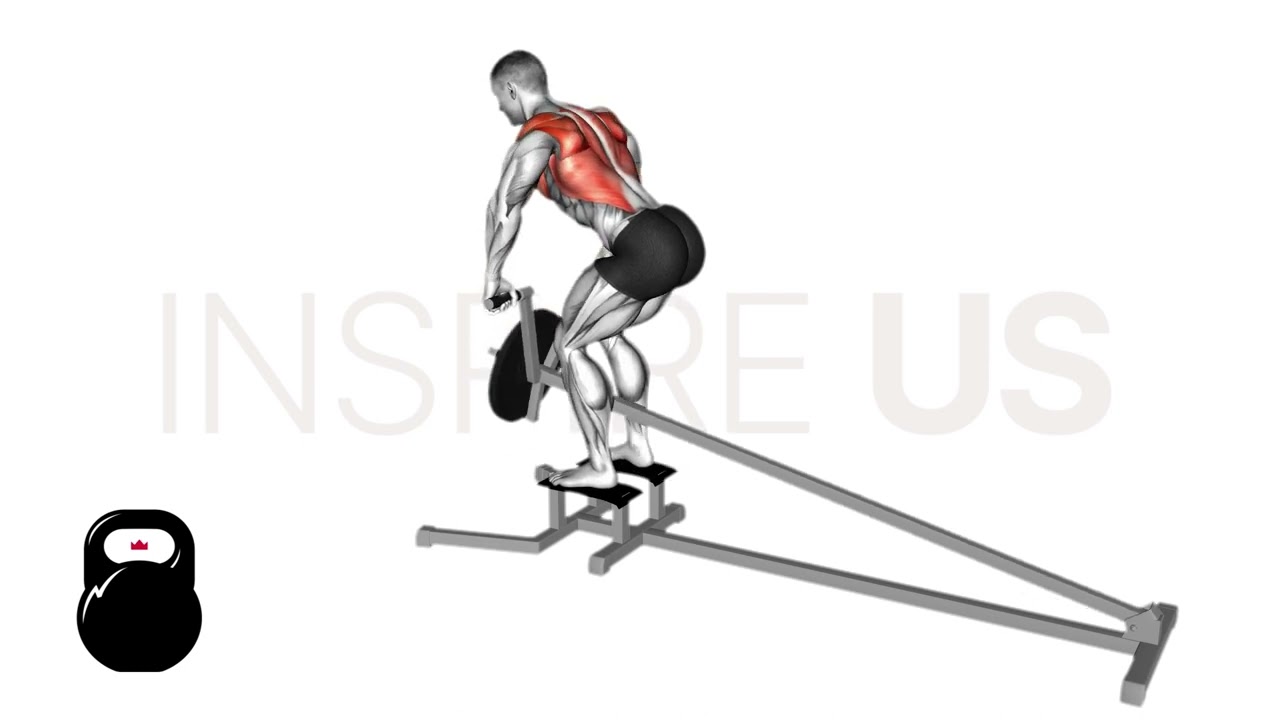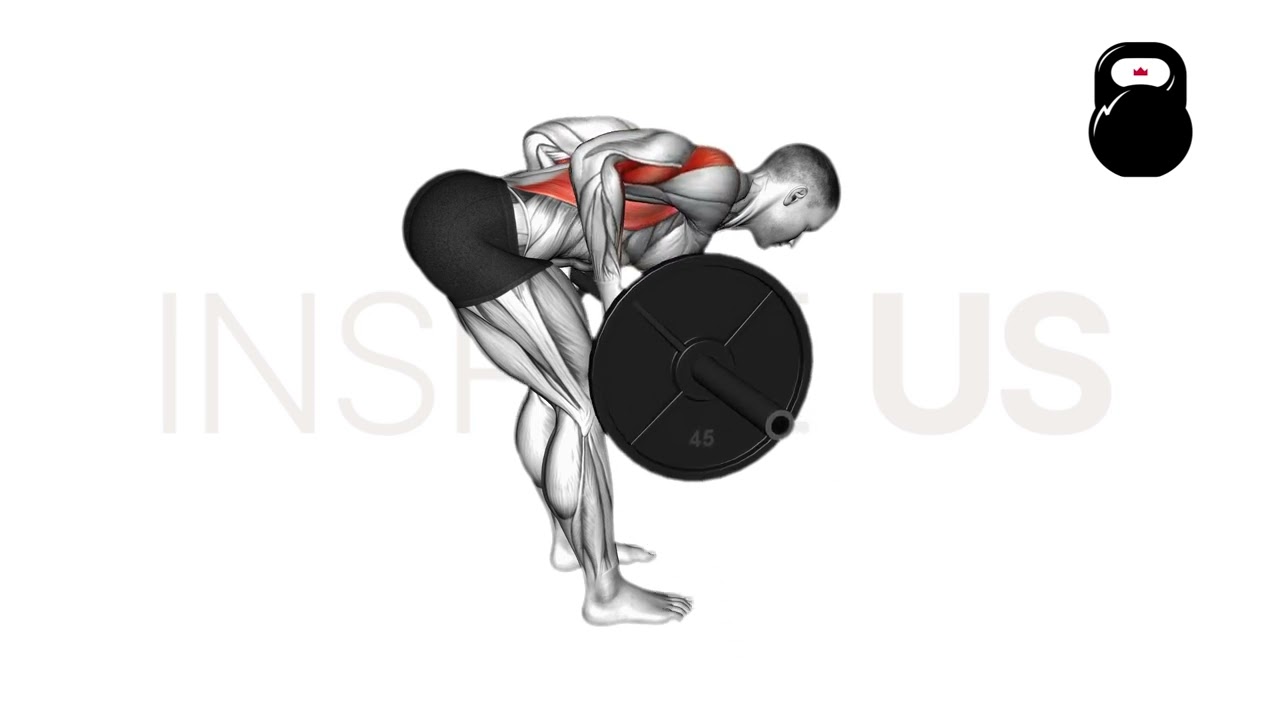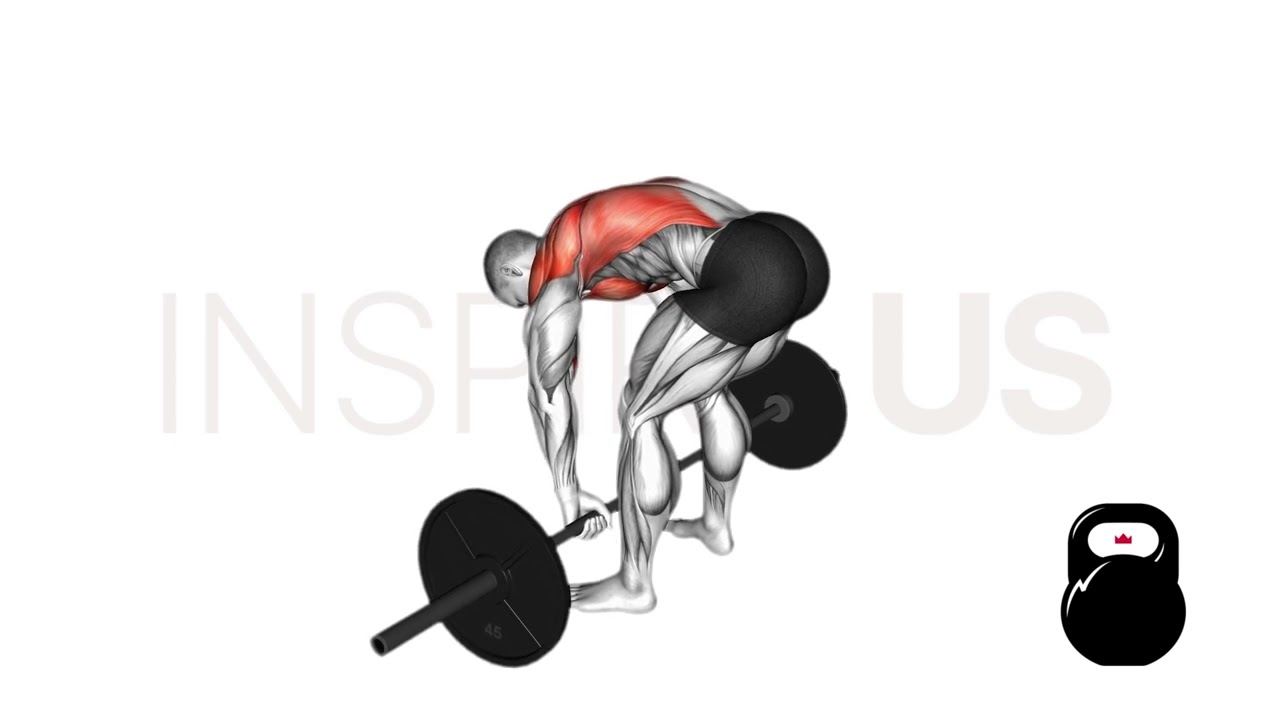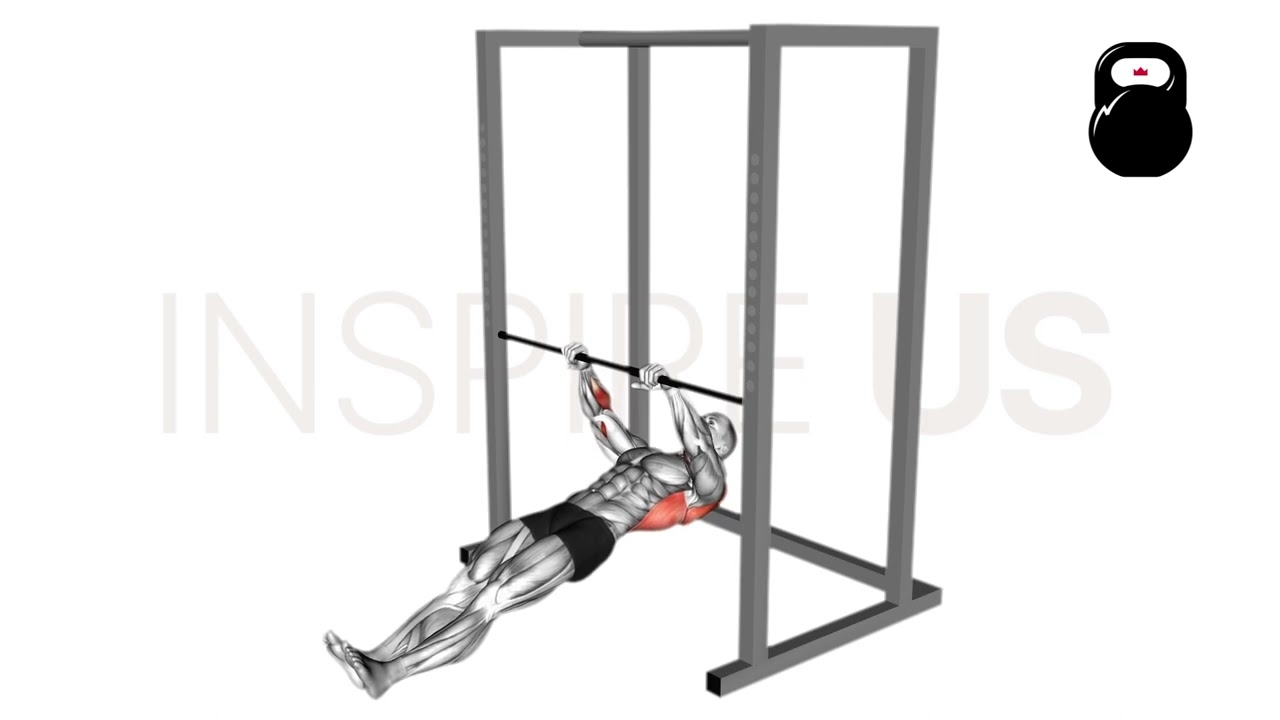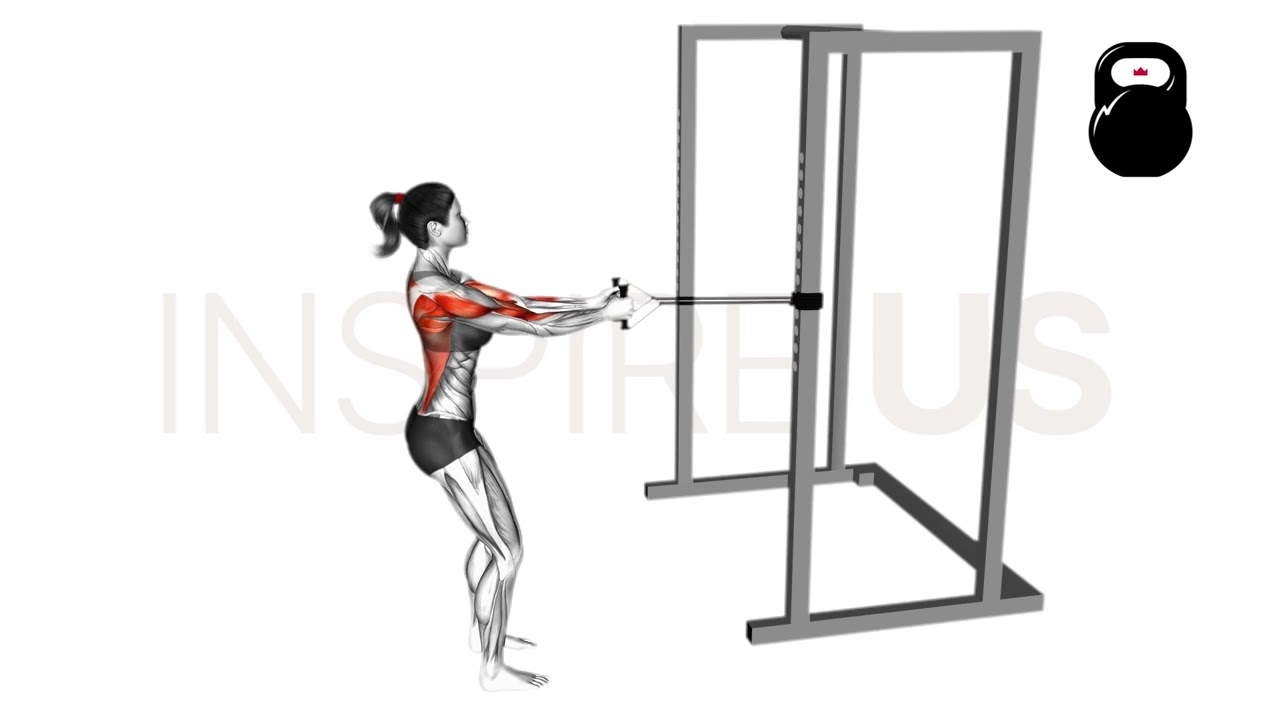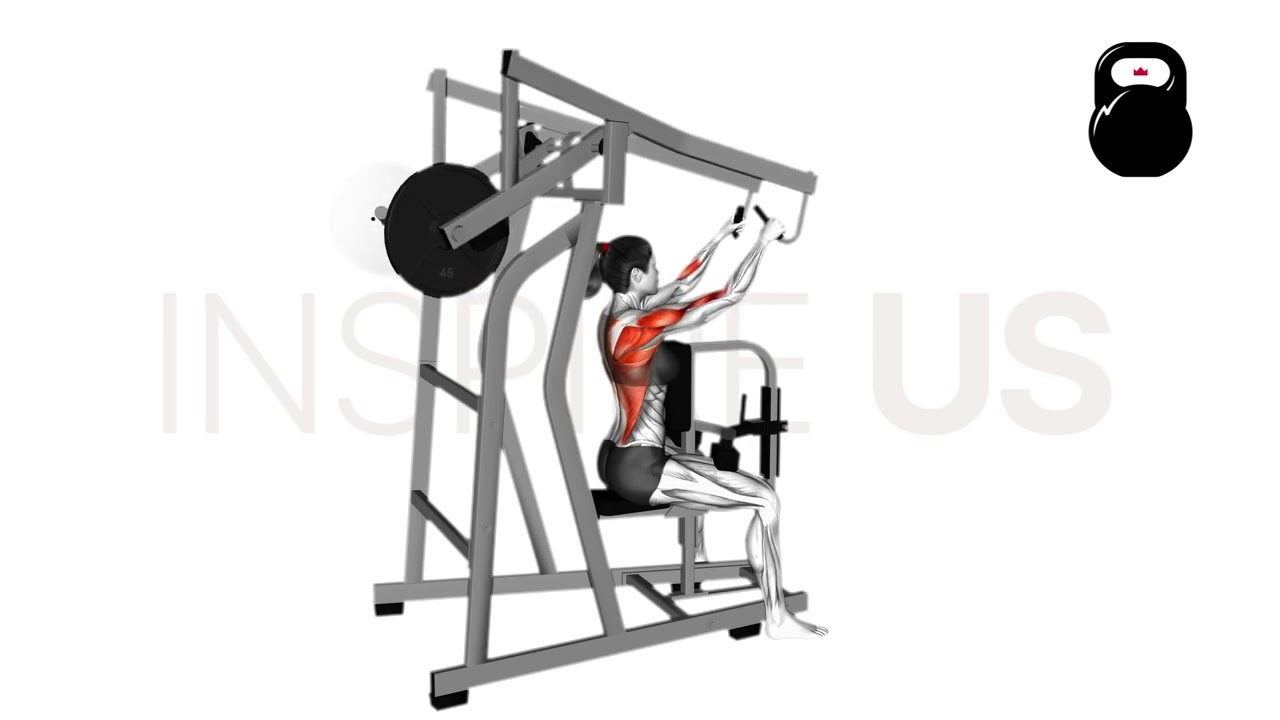6 Best Bent Over Row Alternatives (with Pictures!)
As solid as the conventional bent over row can be, many lifters find themselves either growing bored with what is essentially the most basic form of row - or otherwise wishing for greater emphasis on a specific muscle in their upper body.
Some of the best bent over row alternatives are:
- T-Bar Rows
- Yates Rows
- Pendlay Rows
- Inverted Rows
- Close-grip Band Rows
- High Row Machine
What is the Bent Over Row and Why Alternate it Out?
The bent over row is a classic compound pulling exercise where the lifter quite literally bends over at the waist and rows a weight towards their sternum in this position.
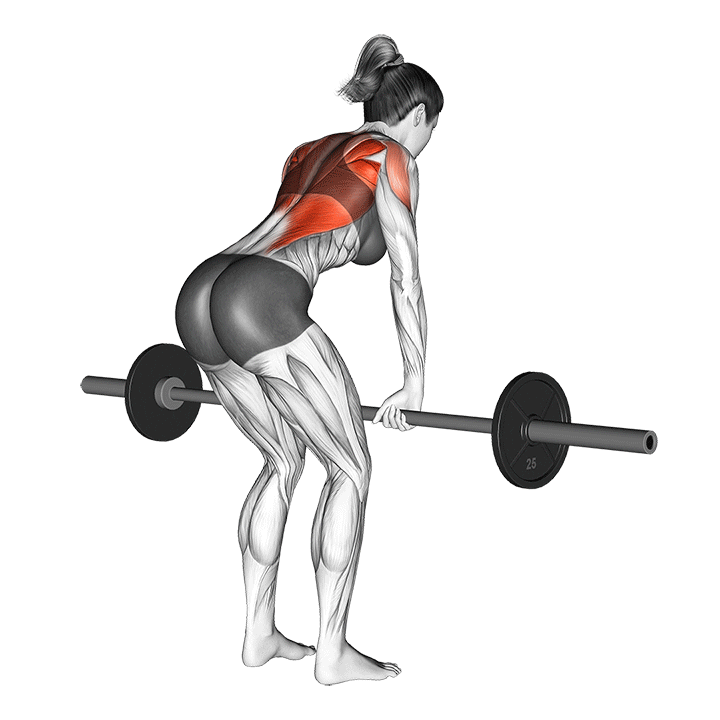
Bent over rows are commonly performed for building muscle mass in muscle groups like the lats, trapezius, rotator cuff muscles, biceps brachii and posterior deltoids. However, they also serve a functional purpose as being one of the heavier pulling movements outside of the deadlift.
Why Substitute Out the Bent Over Row?
Despite its widespread adoption, the bent over row does present a few disadvantages that have led lifters to seek out alternative movements.
The first and most glaring of these problems is the fact that it bends the lifter over at the waist and hips - potentially leading to lower back strain and affecting the overall stability of the movement.
In addition, the bent over row is characterized by a wider than shoulder-width pronated hand orientation, of which is not the best for recruitment of the biceps brachii.
Finally, bent over rows are not the heaviest variation of row one can perform, and neither feature the largest range of motion. This can limit the extent of the athlete’s training, especially at the higher levels where specificity and issues like sticking points are significant obstacles.
A Note on Single Arm Bent Over Rows
Although performing bent over rows with a dumbbell or kettlebell is indeed considered to be an alternative in certain respects, we’ve elected to omit the single arm variant due to its similarity in characteristics.
If your sole issue with the bent over row is simply that it is a bilateral movement - or that you wish to avoid rowing without the upper torso being supported - then the single arm bent over row is a viable option.
Bent Over Row Alternatives
1. T-Bar Rows
T-bar rows are a variation of barbell row where a T-bar handle is affixed to one end of the barbell, retaining the pronated grip, a somewhat greater level of hip hinge and a unique angle of resistance.
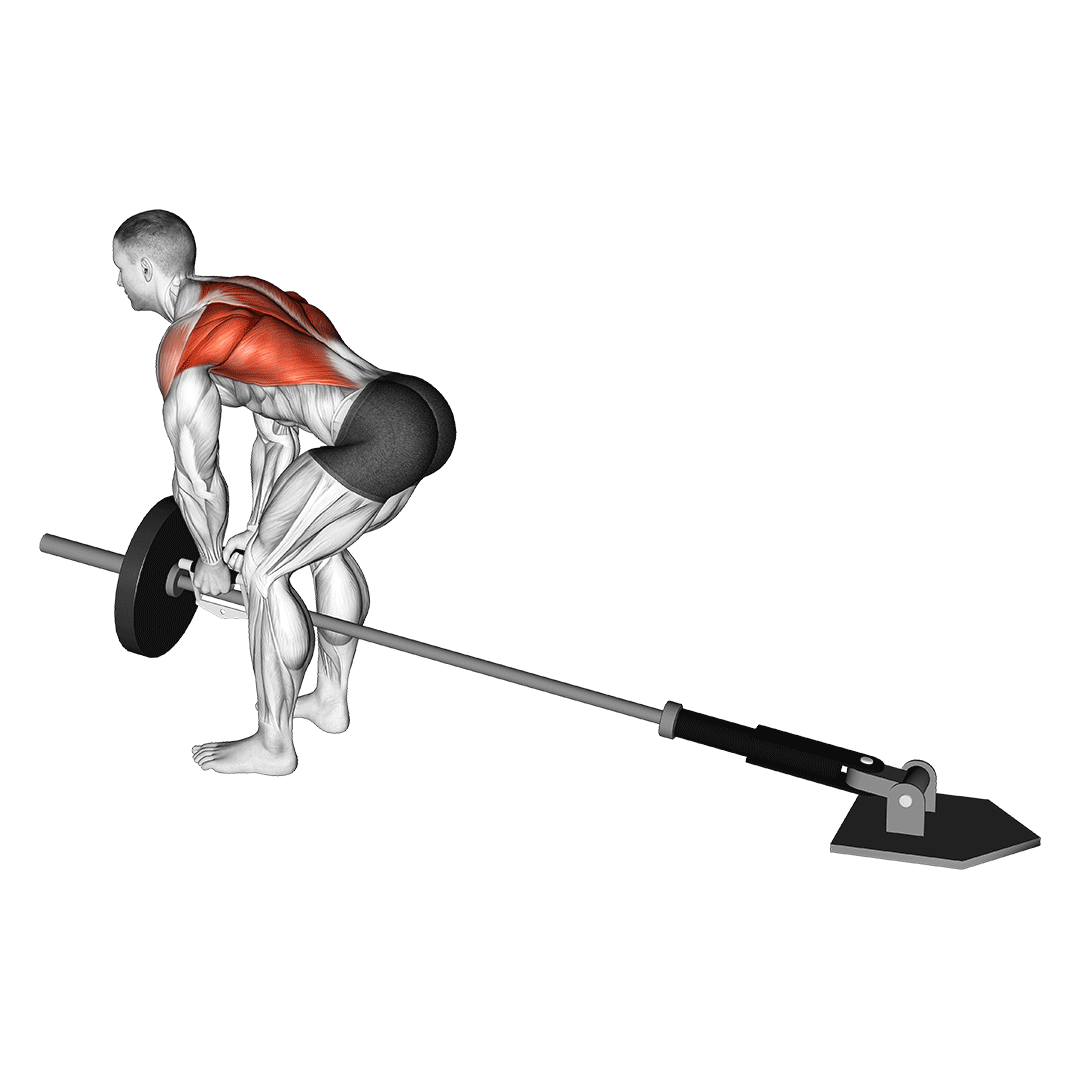
The T-bar row is most often employed as a bent over row alternative in cases where a pronated grip, insufficient lat ROM or insufficient loading capacity are an issue.
However, much like its predecessor exercise, T-bar rows are nonetheless much the same in that they are a free weight compound movement involving forward hinging of the torso and significant elbow flexion.
Pull Muscles Worked
In comparison to bent over rows, the T-bar row places a greater emphasis on the latissimus dorsi and targets the back stabilizer muscles to a slightly greater extent.
Otherwise, the T-bar row and bent over row are much the same in that they work the posterior deltoids, trapezius, the various rotator cuff muscles and the elbow flexors to a similar degree.
Benefits as an Alternative Exercise
The main benefit to substituting bent over rows with T-bar rows is the more advantageous positioning involved - both for achieving a greater “stretch” of the latissimus dorsi and for loading a larger amount of weight.
T-bar rows are performed with only one side of the barbell loaded, with the other being affixed to a landmine apparatus or similar implement. This creates a unique angle of resistance where the barbell is pulled diagonally towards the body’s center of mass, rather than offset in a nearly vertical line to the upper abdomen.
Because of this barbell positioning, not only can the lifter lift more weight, but they can also adopt a somewhat more horizontal torso orientation, allowing for greater engagement of the mid-back musculature.
How-to:
To perform a repetition of the T-bar row, either affix a T-bar handle and landmine apparatus to opposite ends of a barbell or simply load a T-bar machine.
Gripping the handles of the T-bar in an overhand orientation, the lifter then pushes their hips back, unlocks their knees and braces their core so that stable spinal neutrality is achieved. The chest should be pushed out, scapula neutral or slightly depressed and the shoulders pulled back.
From this stance, the lifter then squeezes their lats and pulls the bar towards their stomach, ensuring that the back remains tight throughout the pull. The elbows should flex to the sides and behind the body as the bar comes close to touching the abdomen.
Once reaching the limit of their range of motion, the lifter then slowly disengages their lats and lowers the bar back towards the ground. This completes the repetition.
2. Yates Rows
Named after long-time Mr. Olympia legend Dorian Yates, the Yates row is just as distinct among its peers due to its more vertical torso orientation and traditionally underhand grip.
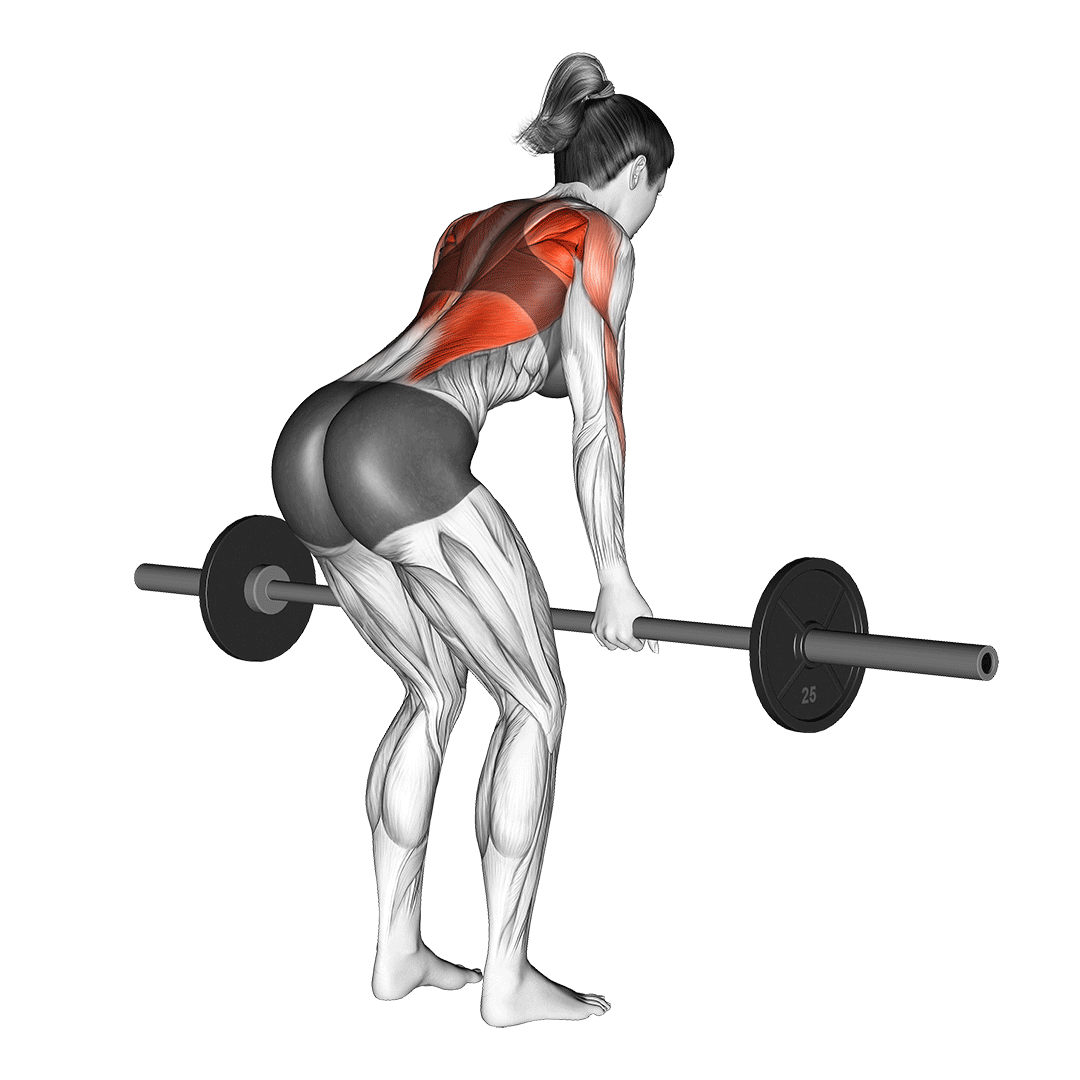
As a substitute to bent over rows, the Yates row is best used as either a progression for more advanced lifters who wish to maximize weight lifted or for bodybuilders seeking greater engagement of muscles like the biceps brachii and lower trapezius.
Pull Muscles Worked
The Yates row targets the exact same muscles as the bent over row, only with greater engagement of the biceps brachii and trapezius muscles - while also reducing the involvement of the lower back stabilizers and erector spinae muscles.
This means that apart from the aforementioned, the latissimus dorsi, rhomboids, infraspinatus, teres minor and major, posterior deltoid head and the two remaining elbow flexor muscles are targeted to a similar extent.
Benefits as an Alternative Exercise
In comparison to bent over rows, Yates rows excel at loading capacity, engagement of the biceps brachii and diffusing pressure away from the lower back.
This makes it excellent for both strength-focused lifters and those that seek greater mass in the more visible muscle groups - as well as lifters that simply wish to up the intensity of the conventional bent over row without putting their back at risk.
Note that it is entirely possible (and even recommended) that novices first perform the Yates row with a pronated grip, rather than an underhand one.
This is simply because a greater risk of biceps injury is present with an underhand grip. Combined with the greater loading capacity of the Yates row, one can see why it is considered to be a more advanced movement than the conventional bent over row.
How-to:
To perform a repetition of Yates row, the lifter will pull a loaded barbell off the floor with the hands set shoulder-width apart using either an underhand or overhand grip.
Unlike with a traditional barbell row, the torso should only be oriented at an approximate 45-degree angle, chest pushed out, knees bent and core nonetheless contracted to still protect the back and spine.
Now in the correct stance, the lifter squeezes their shoulder blades together as they pull their elbows behind their torso, focusing on contracting their back muscles over their biceps.
Once the barbell makes contact with the lower abdomen, the lifter slowly releases the tension in their back and allows their arms to extend back below their body - thereby completing the repetition.
3. Pendlay Rows
On the opposite end of the spectrum to the Yates row, the Pendlay row features a far more horizontal torso orientation so as to maximize back muscle contraction and range of motion.
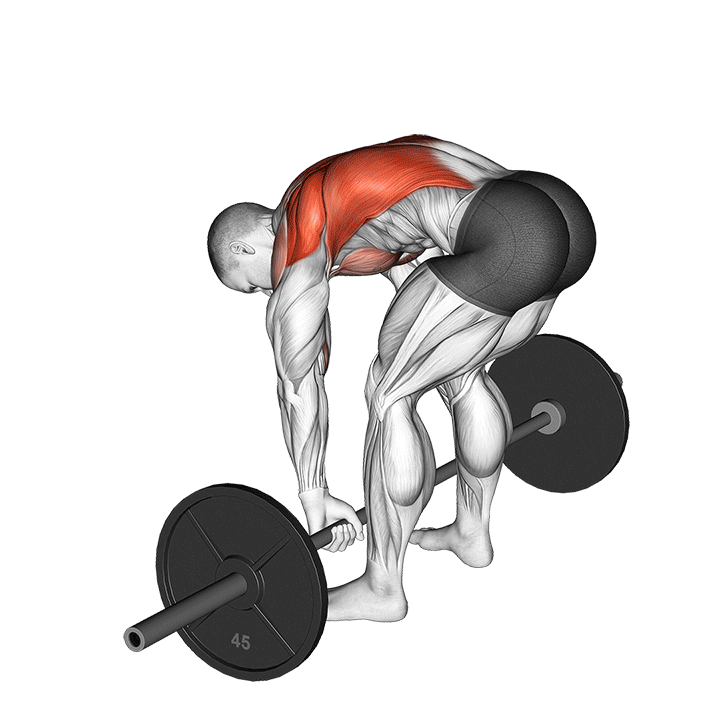
Like the Yates row, Pendlay rows are a more advanced substitute to the bent over row - one most often used to increase training intensity, improve muscular response to training and strengthen the overall pulling strength of the lifter.
Pull Muscles Worked
Pendlay rows target much the same muscles as the bent over row, only with a greater emphasis on the latissimus dorsi, rhomboids, lower trapezius and a markedly greater level of isometric contraction seen in the stabilizer muscles.
Benefits as an Alternative Exercise
The Pendlay row is particularly effective for reinforcing horizontal torso orientation, maximizing how far the barbell has to be pulled from the floor and ensuring as much time under tension is achieved with each repetition.
As far as free weight row variations go, there are no exercises that feature a larger range of motion than the Pendlay row - and only the seal row requires a more horizontal orientation to the torso.
Characteristics like these aid in the specificity of training stimulus, improve performance in less intense exercises and overall result in a generally better exercise for developing pure strength and muscle mass.
How-to:
To perform a repetition of the Pendlay row, the lifter will first set a loaded barbell on the floor immediately over their mid-foot, as if setting up for a deadlift.
The feet should be slightly wider than hip-width apart, the hips hinged back and the knees bent as the lifter adopts a wider than shoulder-width grip along the bar.
Bracing the core, ensuring the lower back is neutral and that the entire torso is nearly horizontal in orientation, the lifter then squeezes their lats and pulls the bar from the floor.
As the bar leaves the floor, the lifter further engages their upper back muscles and pulls their elbows behind their back, keeping their torso at the same horizontal angle as they do so.
When the bar either touches the abdomen or comes within several inches of doing so, the lifter then pauses for a moment before slowly lowering the bar back down towards the ground. This completes the repetition.
Note that unlike with other row variations, the Pendlay row is meant to start and end with the bar completely resting on the floor. Each repetition should come to a complete stop before the next one is performed.
4. Inverted Rows
For a bodyweight alternative to the bent over row, the majority of exercisers are largely constrained to the inverted row itself.
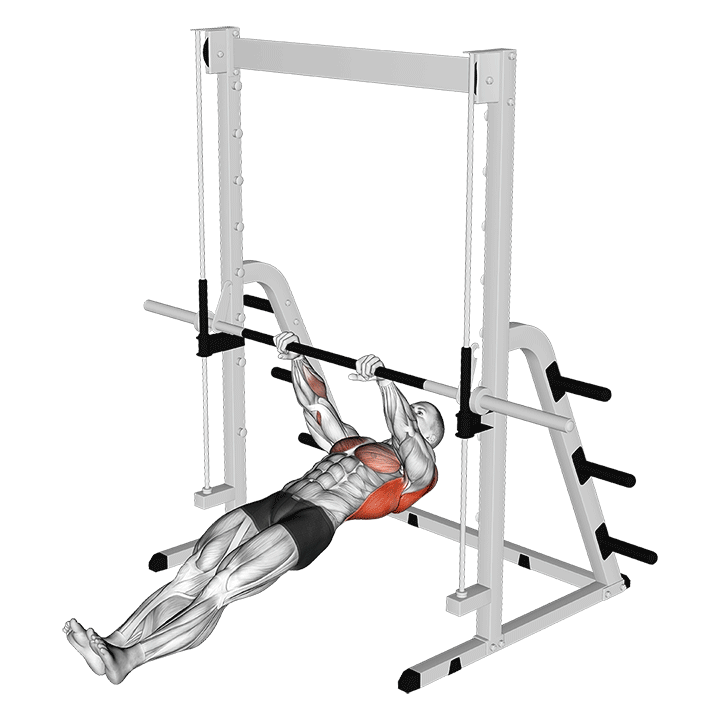
Inverted rows are a compound horizontal pulling movement where the exerciser suspends themselves chest-up from a bar or similar object. This allows for them to quite literally row their own body - acting as an effective replacement in situations where no barbell or other forms of equipment are present.
Of course, substituting bent over rows with standard inverted rows is a regression in terms of complexity and training intensity, and is meant more as a temporary solution rather than a permanent replacement in your program.
Pull Muscles Worked
Inverted rows primarily target the latissimus dorsi, trapezius and other back muscles in a similar manner to the bent over row. However, this is also in addition to the pectoral muscles.
Benefits as an Alternative Exercise
The main benefit to using inverted rows as a substitute exercise is that they are convenient, lower impact and require considerably less equipment or storage space than weighted row variations.
Lifters on vacation and those who wish to avoid straining their lower back can both benefit from picking inverted rows over bent over rows.
How-to:
To perform inverted rows, the exerciser will suspend themselves facing upwards beneath a barbell, railing or similar object slightly higher than arm's length over the ground.
The hands should be set wider than shoulder-width apart in a pronated orientation, and the legs extended close together so as to stabilize the body.
In this position, the exerciser squeezes their lats and pulls their chest towards the bar, bending their elbows as the torso passes them. The core should remain contracted and the entire body forming a flat plane throughout the repetition.
Once the chest is nearly touching the bar, the exerciser reverses the motion in a slow and controlled manner, arms extended back over their body once more. This completes the repetition.
5. Close-Grip Band Rows
Lifters who prefer a more convenient and spine-friendly approach to back training can try performing close grip rows with the use of a resistance band.
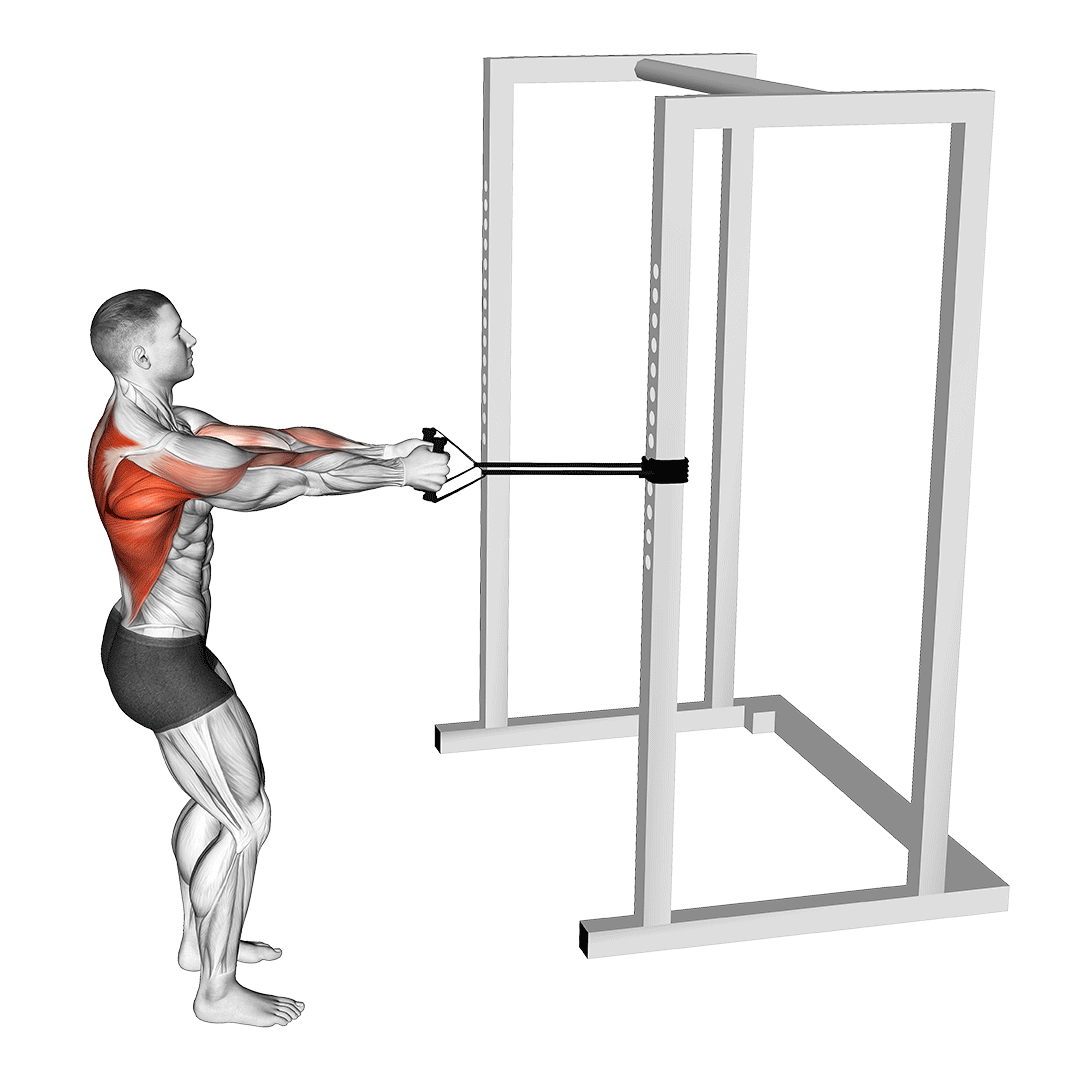
Unlike bent over rows, this particular form of row is performed in a standing or seated position - often with the center of the resistance band anchored to an object around chest-height for maximum back muscle engagement.
Despite this difference in overall stance and positioning, the banded row can rival bent over rows in terms of difficulty and training stimulus if similar levels of relative resistance are used.
Pull Muscles Worked
Depending on whether a neutral or pronated grip is used, the close-grip banded row will emphasize the upper or middle back respectively. This includes the muscles of the latissimus dorsi, trapezius, rhomboids, the teres muscles and other pull muscles normally targeted by variations of the row.
However, in comparison to the bent over row, the erector spinae, core and other lower back muscles are not targeted simply due to the position of the lifter themselves.
Benefits as an Alternative Exercise
Apart from being generally safer and far more convenient than a barbell and set of weight plates, resistance bands also allow for targeted distribution of resistance throughout the exercise’s range.
Essentially, this means that depending on where the lifter is standing in relation to the band (and the band itself), certain ranges may have present greater resistance. Most often, lifters will create greater intensity near the end range of the movement so as to better target the back muscles.
When done correctly, greater emphasis on certain muscles, corrections of sticking points and even a longer time under tension can be achieved through this rather unique aspect of resistance bands.
How-to:
To perform a close-grip banded row, the lifter will affix the middle of a resistance band to an anchor point somewhere around chest or shoulder height, gripping both ends in their hands. Sit or stand far enough back to create tension in the band, ensuring it does not hang loosely even at the start of the repetition.
Then, facing the head forwards, bracing the core, pulling the shoulders down and leaning the torso slightly back, the lifter pulls the bands to the sides of their torso.
This should engage the muscles of the back while simultaneously bending the elbows parallel to the ribs, the bands forming a straight line from anchor point to the chest or shoulders.
Once the elbows are parallel to or even behind the torso, the lifter slowly completes the eccentric by allowing the resistance to stretch their arms back out in as slow a manner as possible.
When the arms are fully extended once more, the repetition is considered complete.
6. High Row Machine
In cases where self-stabilizing resistance or even greater emphasis on the upper back muscles is needed, the high row machine is one of the best bent over row alternatives out there.
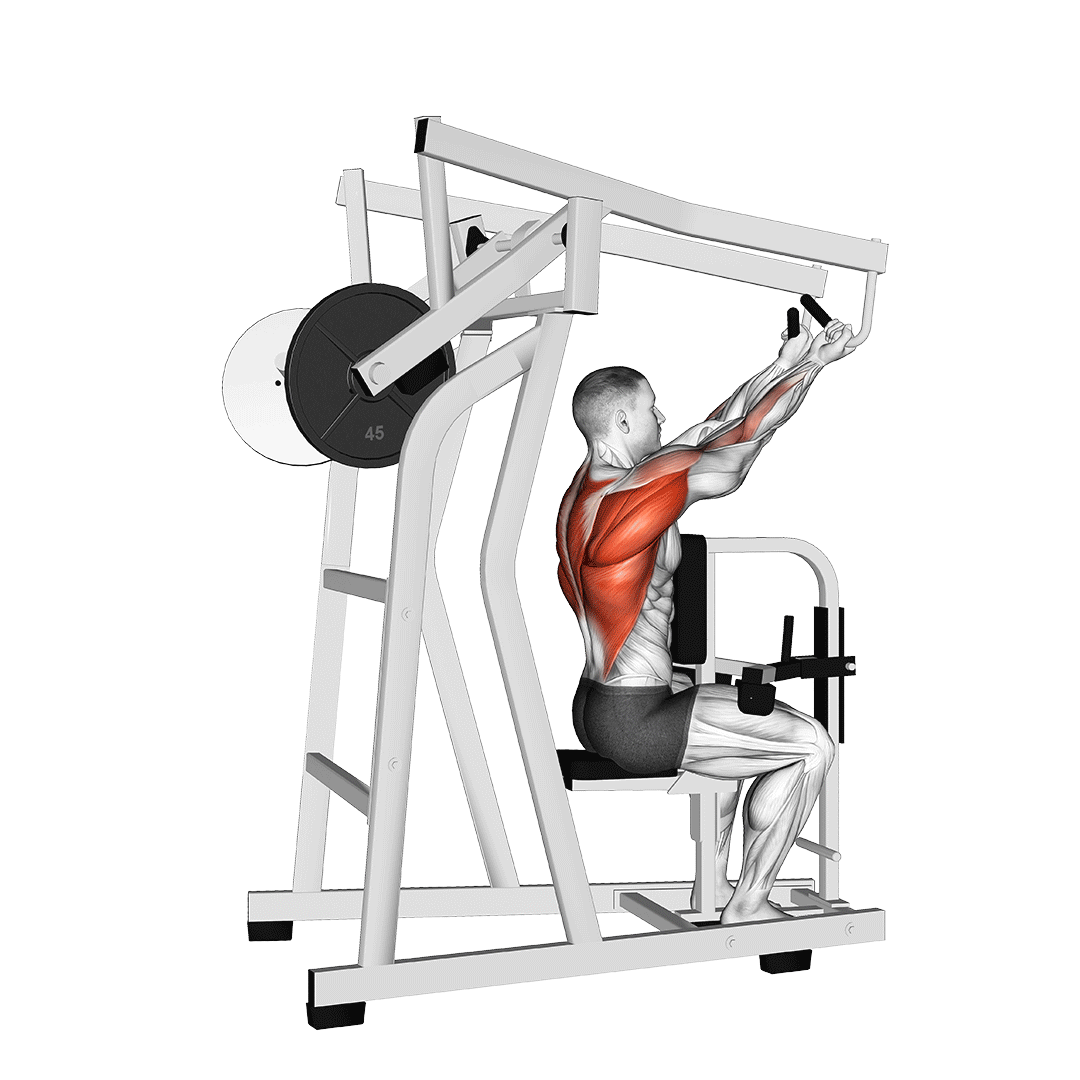
In a similar vein to the close-grip banded row, the high row machine is also performed in an upright position with the angle of resistance largely being angled towards the chest or shoulders. This, among other things, provides the benefit of a more isolated focus on the upper back and a reduction in lower back injury risk.
Pull Muscles Worked
The high row machine primarily targets the upper trapezius, posterior deltoid and other upper back muscles. Of course, the lats, elbow flexors and the remaining mid-back muscles are also targeted to a similar extent.
Furthermore, unlike bent over rows, the machine high row will not recruit the abs, erector spinae or other trunk stabilizer muscles - and, depending on grip used, the biceps may be involved to a far lesser level as well.
Benefits as an Alternative Exercise
As mentioned, the high row machine excels at isolating the upper back in a comparatively greater degree to the bent over row - both because the lower back and other stabilizers are not as involved, and due to its unique angle of resistance.
On top of such benefits, the high row machine also allows for significantly greater amounts of weight to be moved, aiding with conditioning and helping overload muscles that are otherwise placed in a secondary role during a bent over row.
How-to:
Sitting within the machine and grasping both handles in an overhand grip, the lifter pushes their chest out, adopts a completely vertical torso orientation and squeezes their lats together.
As they squeeze their lats, the handles should be pulled towards the shoulders by bending the elbows towards the sides of the torso. Avoid flaring them out to the sides.
Once the handles are nearly touching the chest or a full range of motion has been reached, the lifter slowly releases the tension in their back and allows the handles to return to their original position - thereby completing the repetition.
References
1. Fenwick, Chad M J et al. “Comparison of different rowing exercises: trunk muscle activation and lumbar spine motion, load, and stiffness.” Journal of strength and conditioning research vol. 23,2 (2009): 350-8. doi:10.1519/JSC.0b013e3181942019
2. Lorenzetti, Silvio, Romain Dayer, Michael Plüss, and Renate List. 2017. "Pulling Exercises for Strength Training and Rehabilitation: Movements and Loading Conditions" Journal of Functional Morphology and Kinesiology 2, no. 3: 33. https://doi.org/10.3390/jfmk2030033

